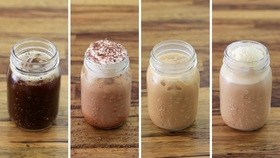Perfect Sous Vide Egg Recipe for Breakfast Enthusiasts
If you're a breakfast enthusiast who loves perfectly cooked eggs, this sous vide egg recipe is a game-changer. The sous vide method, a French cooking techni……
If you're a breakfast enthusiast who loves perfectly cooked eggs, this sous vide egg recipe is a game-changer. The sous vide method, a French cooking technique that translates to "under vacuum," allows you to achieve precise and consistent results every time. Whether you prefer your eggs soft, medium, or hard, this guide will provide you with all the details you need to master the art of sous vide eggs.
### What is Sous Vide Cooking?
Sous vide cooking involves sealing food in a vacuum-sealed bag and immersing it in a water bath at a controlled temperature. This method ensures even cooking and retains the food's natural flavors and nutrients. When it comes to eggs, sous vide cooking offers unparalleled control over the texture and doneness, making it a favorite among chefs and home cooks alike.
### Ingredients and Equipment
To make the perfect sous vide egg recipe, you'll need the following ingredients and equipment:
- Fresh eggs
- Sous vide precision cooker
- Vacuum-sealed bags or resealable plastic bags
- A large pot or container for the water bath
- Ice water for cooling (optional)

### Step-by-Step Instructions
1. **Set Up Your Sous Vide Cooker**: Fill your pot or container with water and attach the sous vide precision cooker. Set the temperature to your desired level of doneness. Here are some common temperatures and times for different egg textures:
- Soft-boiled: 63°C (145°F) for 45 minutes
- Medium-boiled: 70°C (158°F) for 20 minutes
- Hard-boiled: 75°C (167°F) for 13 minutes
2. **Prepare the Eggs**: Place the eggs in a vacuum-sealed bag. If you don't have a vacuum sealer, you can use a resealable plastic bag and use the water displacement method to remove the air.
3. **Cook the Eggs**: Once the water bath has reached the desired temperature, submerge the bag of eggs into the water. Make sure the eggs are fully submerged and leave them to cook for the specified time.
4. **Cool the Eggs (Optional)**: After the eggs have finished cooking, you can transfer them to an ice water bath to stop the cooking process. This step is optional but recommended if you want to serve the eggs later or if you prefer a firmer texture.

5. **Serve and Enjoy**: Carefully remove the eggs from the bag and peel them. Serve them as they are, or get creative with your presentation. Sous vide eggs are perfect for breakfast bowls, on toast, or as a topping for salads and ramen.
### Tips for the Best Sous Vide Eggs
- **Freshness Matters**: Always use fresh eggs for the best results. Fresh eggs have firmer whites and yolks, which hold up better during the cooking process.
- **Experiment with Flavors**: Add herbs, spices, or even a splash of truffle oil to the vacuum-sealed bag for an extra layer of flavor.
- **Consistency is Key**: Make sure your water bath maintains a consistent temperature throughout the cooking process. Fluctuations can affect the final texture of the eggs.
- **Batch Cooking**: Sous vide cooking is ideal for batch cooking. You can cook multiple eggs at once and store them in the refrigerator for up to a week. Simply reheat them in a warm water bath before serving.
### Why Choose Sous Vide for Eggs?
The sous vide method offers several advantages over traditional cooking methods:

- **Precision**: Achieve the exact level of doneness you prefer without the guesswork.
- **Consistency**: Get perfect results every time, whether you're cooking one egg or a dozen.
- **Flavor Retention**: The vacuum-sealed bag locks in flavors, resulting in more delicious eggs.
- **Nutrient Preservation**: Cooking at lower temperatures helps preserve the nutrients in the eggs.
In conclusion, this sous vide egg recipe is a must-try for anyone looking to elevate their breakfast game. With a little bit of preparation and the right equipment, you can enjoy perfectly cooked eggs with minimal effort. So why not give it a try and experience the magic of sous vide cooking for yourself?